

| Lunar
Module Porch and Ladder |
The photo below show the kit
part for the porch. According to David Weeks drawing sets, the
porch is too long. The railing is shown next to David's
drawing. Note the pencil marks on the railing, which is where I
cut it. As it turns out, I have the railing reversed (left right)
from the way it should be.
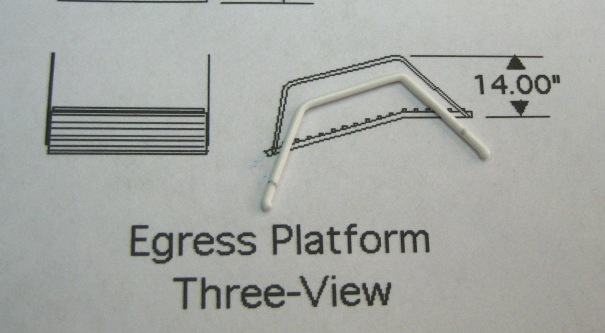
Note that the porch has a bend in it, and the short portion needs to be closest to the hatch. In building my model, I cut
off three ridges worth of the lower section. I probably should
have cut two from the bottom and one from the top. I added some
plastic strip along each side since the "treads" did not extend to the
edges of the porch. Of course, the original mounting holes for
the railings are not accurate, and need to be removed. If you
install the porch per the kit instructions, you've installed it
backwards. They have small nubs on the bottom that are supposed
to mate with holes in the descent stage. But that puts the long
section towards the hatch, which is wrong.

What also confused and bugs
me is the inconsistancy in the way the side railing are installed on
several museum displays. The railings have a long leg with a
gentle bend that should be closest to the hatch. The other leg of
the railing has a larger radius bend but bends at an overall sharper
angle, and goes towards the ladder. The photos and drawing below
illustrate the actual configuration.
The first photo is from the
Apollo 15 mission.
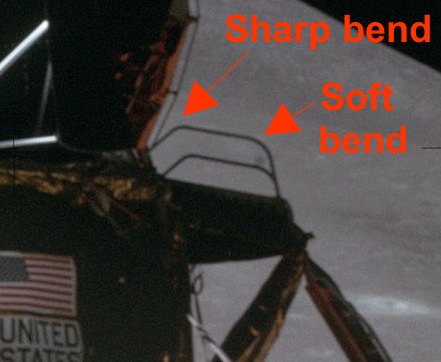
This
next photo is of LM-6 at KSC courtesy of Mike Robel.
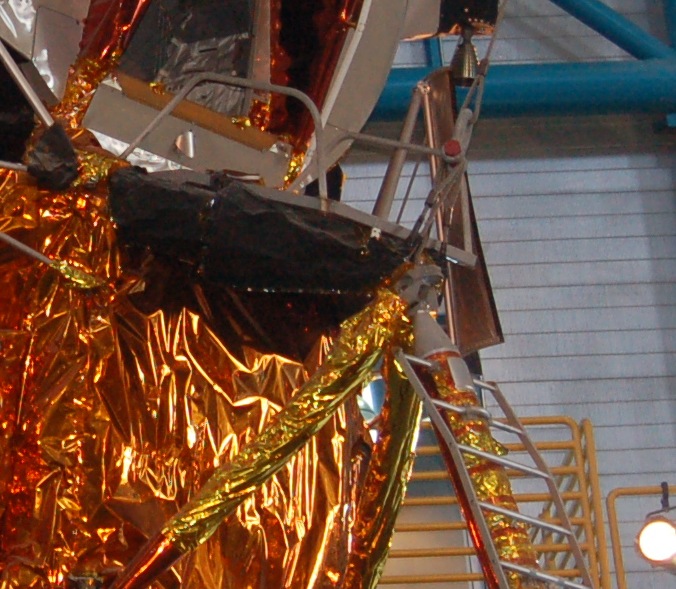
This
is an excerpt of what seems to be an accurate drawing. Note the
sharp, smaller radius bend closest to the hatch, while the bend at the
right is gentler (larger radius).
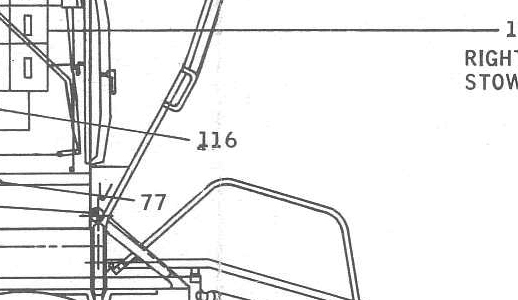
Now look at these photos below. The first was provided by Karl
Dodenhoff, and was taken at KSC (?). It appears to me that the
railings are installed backwards.
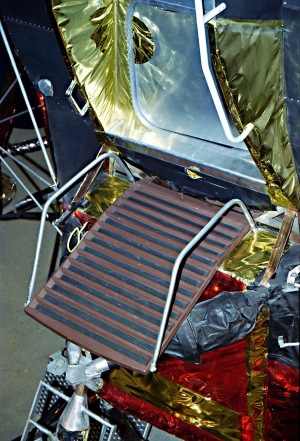
Also note how the top rung of the ladder is in the conical portion of the leg, while in reality the first rung is a little lower. The kit repeats this error, with the first rung in the conical section, which is probably an earlier configuration. I did not catch this in my model.
In this photo of the LM at
the Kansas Cosmosphere museum, provided by Mike Idacavage, there is one
railing installed okay (towards the top of the photo), while the other
is backwards. It also has the top rung of the ladder in the cone.
Let's look at the ladder a
little closer. The kit part has 10 rungs with the top rung buried
in the conical section of the leg. The real
ladder had 9 rungs with the top one below the conical section.
The photo below is the LM at the Alabama Space and Rocket Center in
Huntsville. It appears to have an accurate ladder (although the
blanket colors appear to be for an early mission - there was more
orange kapton in later missions). I don't have a good photo of
the Huntsville porch, but it appears to be a poor reproduction and not
even close to a flight or engineering version.
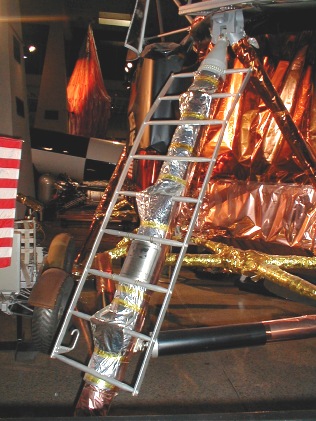
The photo below is from Apollo 11, and note how this matches the Huntsville display but not the kit.
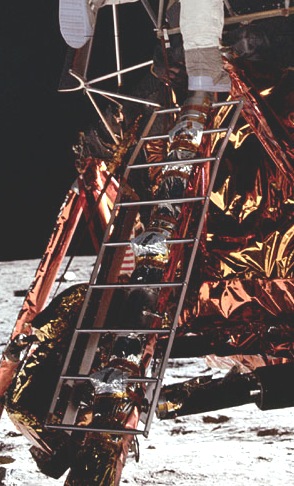
You cannot cut off the top
rung on the kit part because it bends at the correct place (at the
third rung). I did not want to cut off the bottom rung because it
has the nice attachment piece. Unfortunately, that lowest
attachment point should be at the rung second from the bottom (see
photo above). Short
of rebuilding it from scratch (it would be a pain to make it square and
uniformly spaced...), I
just cut it in the middle, with offset cuts to maximize strength and
straighness.
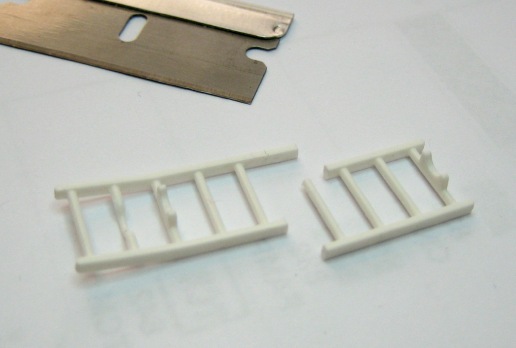
This is the final result of the model. It's not perfect but it's reasonably close.
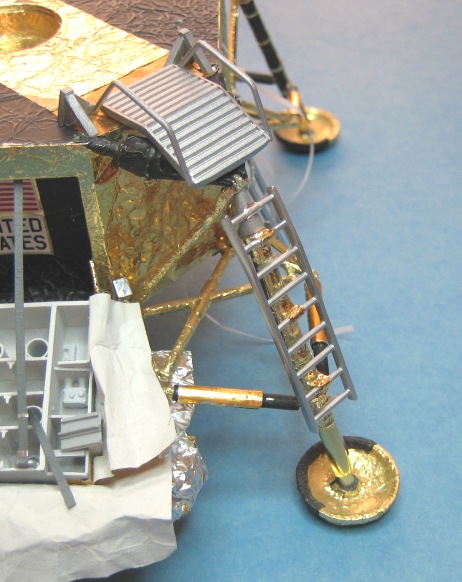
As has been my philosophy with this model, "done" is better than "perfect."